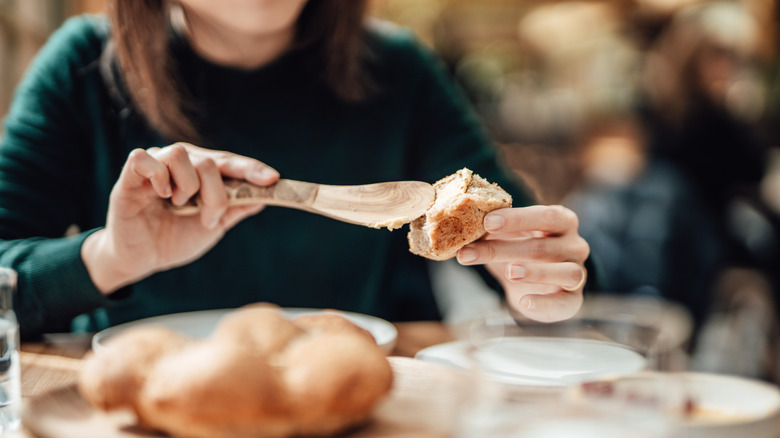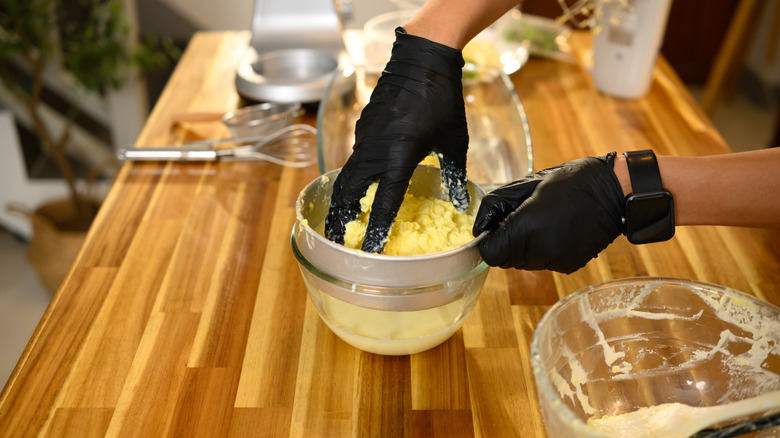Here's Why Butter Always Tastes Better At A Restaurant
We previously learned that the reason that steaks taste different at a restaurant is because restaurants often source higher-quality ingredients. The same goes for butter. Have you noticed that the butter at your favorite high-end restaurant tastes smoother, more unctuous, and richer than the butter in your dish at home? When you were carefully observing the etiquette for eating bread and butter before the main course — and, yes, there is an art to it — did you notice that the butter compliments the bread perfectly, perhaps even becoming the star of the show?
The secret, says chef Zoilan Ruiz of Le Rêve Restaurant & Raw Bar, is in the quality. "Restaurant butter often tastes better because chefs start with high-quality ingredients and take simple steps to elevate flavor and texture," he explains. "These butters have higher butterfat content and less water than standard supermarket varieties, which gives them a silkier texture and more intense flavor." At an upscale resto known for the stuff, like NYC's Quality Bistro with its famous butter service, it's a decent bet that the butter could even be made specifically for the eatery from an artisanal creamery. Don't despair if you don't know the right person at a dairy farm, however. According to chef Ruiz, you can make more thoughtful choices at the grocery store (or in your own kitchen!) to ensure that you have a better butter experience at home.
You can have restaurant-quality butter in your own kitchen
Want to improve your butter experience without going out to a nice restaurant? Be pickier about the sort you buy at the supermarket, chef Ruiz advises. "At home, you can absolutely recreate this effect by choosing rich, creamy, unsalted butter," he says. "Think European-style brands like Plugrá or Kerrygold, or even better, something fresh and local." Does this sound intimidating? It doesn't have to be. If you have a local farmer's market, it's a safe bet that someone there is selling local, hand-made butter. You will likely pay more for the product, considering that it's not mass-produced, but you will almost certainly taste the difference.
Don't discount the option of making your own butter, either. Before you get alarmed, just know that there is no butter churn required. If you have a stand mixer or food processor, you can whip up your own butter in about a quarter-hour. You just need heavy cream, which, again, you can source locally or buy off the shelf in the dairy section at the grocery store. Whip the cream for about 10 minutes, strain off the liquid, rinse the butter, and salt to your liking. Voila ... fresh butter that you can customize to your liking by adding fresh herbs or seasonings, which will also taste better than the cheap, generic sticks that are on sale at the supermarket.

